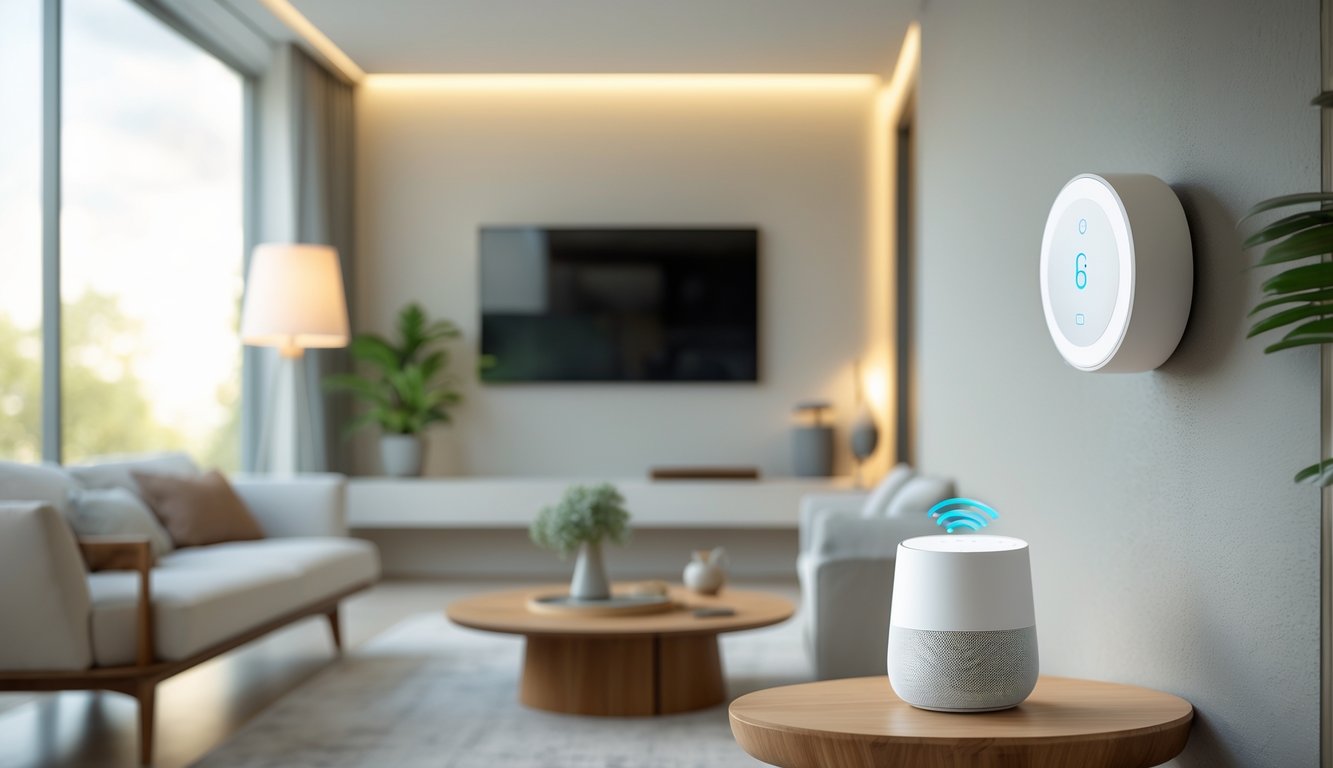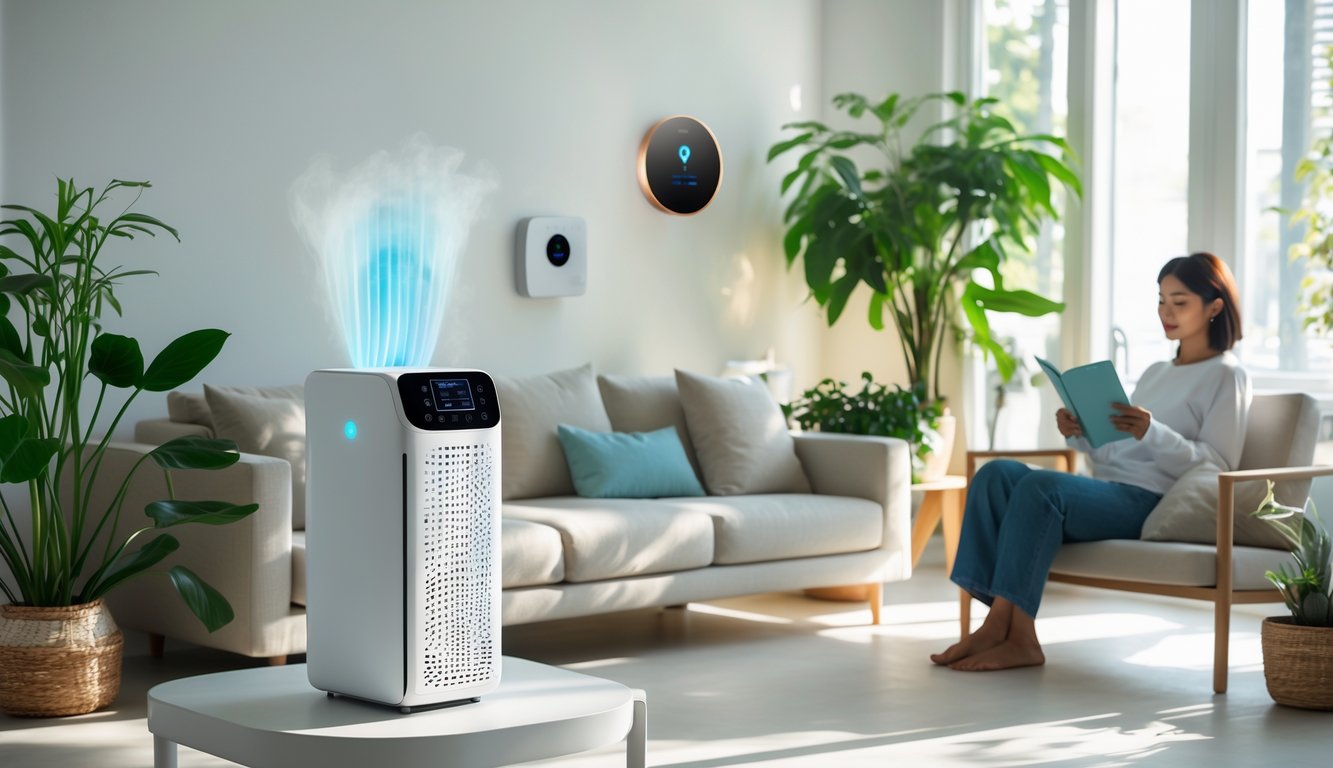
Sustainability And Energy Efficiency Benefits
People love showing off their fancy smart homes, but I’m still wrestling with a smart plug that refuses to join my Wi-Fi. Honestly, the real perks are boring: less wasted power, lower bills, and maybe a tiny dent in the world’s energy mess. Not exactly Instagram material, but I’ll take it.
Reducing Environmental Impact With Smart Tech
My smart thermostat app actually asked if I wanted to blast the AC while I was at the grocery store. No. Apparently, thermostats and smart meters can drop energy use by 15% if you just let them tweak stuff when you’re gone (Energy Star and Forbes both say so, and I’m just repeating). City planners geek out over this stuff, but most people don’t even notice.
Lights that shift with daylight (Philips Hue does this, it’s not witchcraft), appliances that shut off, sensors that watch who’s coming and going—supposedly, all this cuts your carbon footprint. Someone tried to sell me on “happy string lights” last week. Sure, but they don’t run an energy audit. One app to rule them all, less power wasted, and, yeah, emissions go down. It’s not glamorous, but it’s real.
Energy-Efficient Appliances In The Home
I replaced my ancient fridge with an ENERGY STAR one, and honestly, I forgot about it until I noticed the bill was $40 lower this year (DOE says that’s normal). Water-saving dishwashers? Nobody brags about them, but those “eco” modes can save nearly 4,000 gallons over five years. That’s not a made-up number; it’s on the bill.
Microwaves, washers, even window ACs—if you get the right models (ask an installer, they’ll never shut up), they show you exactly how much juice they’re using. Pair them with home energy monitors, and you’ll see which gadgets are energy vampires. My neighbor has three smart bulbs, leaves them all on. Automation would fix that, but, you know, habits. When you see the numbers, it’s way harder to ignore than whatever’s trending on Pinterest.
Health, Wellness, And Air Quality Innovations

Changing a rug never fixed my allergies. Velvet throws are useless against stuffy air and that weird musty smell from the vent. Why does nobody talk about air quality? Influencers pretend you can buy fresh air at Target, but, no, you can’t.
Improving Indoor Air Quality Automatically
My air purifier basically sleeps unless there’s wildfire smoke or I burn bacon. But smart air sensors—Awair Element, uHoo, whatever—track VOCs, particulates, even CO₂. Some HVAC people in a 2025 report claim automated ventilation can cut indoor pollution by 60% compared to just cracking a window and hoping for the best.
I swapped my cheap filter for a MERV 13, and my allergies got a lot less dramatic. Higher-grade filters are worth it—Johns Hopkins says so, and my lungs agree. None of this involves succulents or mood boards.
Also, if you got a smart thermostat just to save money, surprise: it nags you when humidity drops below 30%. That’s dust mite central. I bump up the humidity, open a vent, and suddenly my throat isn’t scratchy every morning.
Enhancing Daily Life Through Wellness Technology
Nobody tracks their sleep with a velvet ottoman. My ex thought mood lighting was “wellness”—yeah, right. My Withings sleep mat, synced with an Ecobee air monitor, woke me up at 2AM: “CO₂ rising.” That alert did more for my sleep than any fancy pillow.
You read ingredients on food, but air? Invisible. My friend’s obsessed with her smart inhaler dashboard, matching pollen days to PM2.5 spikes in her living room (Asthma+Smart Home Integration, that’s a thing). She starts the air exchanger early, and Mayo Clinic says that’s actually huge for asthma. Bigger deal than washing bedding daily, apparently.
Salt lamps and plant walls look cute, but wellness tech actually tracks VOCs, sleep, and air. Dermatologist says SPF 30 is fine, but who remembers to reapply when your lights already mimic sunrise and the air monitor’s nagging you about pollen? Sometimes I think my air monitor cares more about me than my gym group chat.
Customization And Personalized Spaces Through Smart Tech
Here’s the thing: room makeovers always skip over the tiny routines that make life actually livable. Sure, change the paint, hang new photos, but if your lights don’t dim themselves or your thermostat doesn’t remember you like it freezing at 2AM, what’s the point? Smart tech notices if I want “coffee lighting” at dawn. It just knows. I haven’t met a lighting designer who gets that.
Adaptive Environments For Comfort And Efficiency
My friend’s “modern” house? Fancy tiles, ancient heaters, constant breaker trips. Comfort and efficiency barely exist there. I added a smart thermostat at home, let it drop the heat a couple degrees at night—12% lower bill, no more waking up like I’m suffocating.
Think programmable lighting is for nerds? Philips Hue sold 30 million bulbs last year. I still can’t decide if lavender light makes me hungry or sleepy at dinner. Motion sensors, though, stopped my yelling about lights being left on. Schedules are fine, but adaptive tech changes the room before I even notice. “Just buy blackout curtains”—yeah, but that’s not the same. Comfort’s not optional. And, no, smart homes can’t save burnt toast.
User Preferences And Programmable Settings
Programmable settings are a win for weird habits, not just style. My upstairs lights fade at exactly 10:38 PM because that’s when I usually give up on reading. Try finding décor that does that. With Google Home or Alexa, I control shades, heat, that random diffuser, probably my mood if I let it.
Nobody’s daily routine is generic. My morning playlist starts if I move in the kitchen—my cat hates it. Statista says 40% of US homes use at least one custom routine. Not shocking, but the amount of data (“prefers blue light after 8PM”—seriously?) is wild. If wallpaper was the answer, why does my smart lock open when I drop groceries?
Even high-end designers—one I know swears by ambient presets—get outdone by a $60 smart plug. Looks can’t compete with programming. Set it and, okay, don’t forget it, but at least you stop nagging everyone.